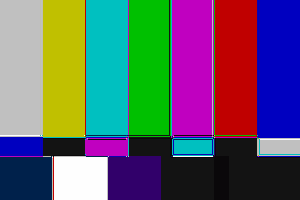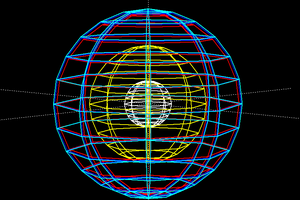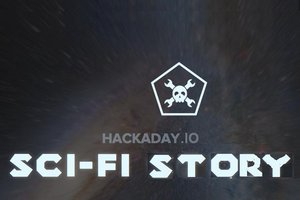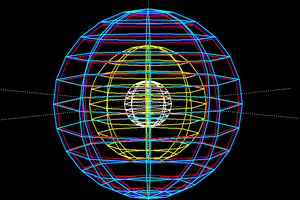To make the experience fit your profile, pick a username and tell us what interests you.
We found and based on your interests.
As I was trying to organize the thinking and interpretations of the research I had been doing for many months I found a satisfying way to divide it all into four perspectives:
I wanted to find a simple list of elements that captured the whole space of thinking on the origins and development of life. Some of the research I was reading was talking about life in terms of bare information theory, which was very abstract and challenging to tie to everyday lived experience. Some of it was talking about how humans and other intelligent animals learn, while presupposing those endpoints of evolution. Other research concerned consciousness, which is a phenomena built around and within an individual's experience. And the last category of research concerned the complex and emergent patterns that form when many individuals are gathered together in one system - a society or ecosystem.
Attempting to distill those categories of research I ended up with the list above. The space concerns the area where all of this activity is occurring. It is the Universe, or maybe an abstract mathematical model. It has rules and the information that they govern. The map is any model made by an agent of the space from within it. It might be as simple as the bit string mentioned in relation to the bit guessers from a previous post, or it might be as complex (and more) as the mental model a human uses to navigate the world. One big idea that I feel like I'm orbiting is that map-making is fundamental to the process of life and possibly the two processes can be concretely related via information theory. But I don't have anything concrete to say about that yet. The "individual" is concerned with consciousness. It's a wrapper for the questions about the meaning behind the lives of individual agents and how they relate to the world that they are building their maps for. I'm fascinated by an interpretation of consciousness as a storytelling process, synthesizing disparate information sources which may not be in sync into a coherent narrative. In a way the role of consciousness is to take the map and set out on adventures which generate experiences that are encoded back into the map. Finally, society is a combination of many individual agents interacting. For all these terms I interpret the definitions very broadly. "Society" might include abstract systems with very simple agents, or apply in the usual sense to human societies and phenomena like economies and governments. At the societal level there are the questions around how to define objects. Where do we define the edges? Why are there distinctions between individuals and society? Is the society in a sense another individual? Are there individuals and societies at every level of complexity? Etc.
I found a simple lidar sensor which takes distance measurements as it spins in a circle. If the measurements are recorded then a 2D map can be created from the data. If the sensor is moved the map can be extended into 3D. What I did was take the sensor and tape it to a stick and then plug it into my laptop and shove my laptop into my backpack. I wrote a little bit of code to record the data points and later little bits of code to visualize it. At various points I took the lidar-on-a-stick and walked around Brooklyn collecting data sets.
I was surprised how satisfying this simple setup was to play with....
Read more »This was originally the content of the details for the project, but the focus and angle described here has been set aside for the time being so I've turned it into a project log instead.
Transporting fleshy, vulnerable humans through space requires a lot of shielding. We have to be protected from the vacuum of space and the radiation that fluxes through it. Minimizing the mass required for shielding is going to be a key engineering challenge for future space missions. Water works great as a radiation shield and is relatively easy to deal with (can be pumped into inflatable structures) but it's very dense. Smarter materials can block more radiation with less mass. It turns out that there are some living organisms that fall into this category. These living radiation shields use ionizing radiation for nourishment. One example of such an organism is cryptococcus neoformans which can be found growing both in bird poop and the reactor vessel at Chernobyl. A similar lifeform was taken aboard the International Space Station to examine the potential for engineering living radiation shielding for future space missions.
Humans might be a small part of a dense ecosystem aboard space craft of the future. Besides shielding there are benefits in using living organisms to produce food and medicines en route, to help clean the air, alleviate human stress, and potentially more exotic applications like in self-healing composite structural components or helping to monitor for environmental contamination. As we get better at creating synthetic biology it's likely that we replace more and more of our current dead technology with new and improved living equivalents. After all, finding general methods for convincing biological systems to do our bidding would be equivalent to stealing fire from the Gods - the constructs of biology can be viewed as a fantastically advanced form of technology of non-human origin.
Space flight is a uniquely constrained problem space because of the high cost it assigns to the mass of the system doing the flying. Every bit of mass has to be accelerated, and we accomplish acceleration by flinging mass opposite where we want to accelerate. That double cost from mass creates the tyranny of the rocket equation. Mass makes it hard to get where you are going, but it also makes it hard to stop once you get there. As a result the engineering game is both about reducing the amount of mass launched and getting rid of it as efficiently as possible along the way.
An interesting consequence of these constraints for future human colonization of the solar system is that we are going to generate a lot of waste, and a lot of trash. When we launch our rockets we'll leave most of their mass on Earth in the form of hot exhaust gases. When they arrive at their destinations they will either jettison or park most of their mass before landing their cargo and/or crew. For reasons I'll get into elsewhere I guesstimate that humans will be spewing bits of spacecraft around the solar system for around a few hundred years (assuming we survive at all and don't send ourselves back to the stone age). The clock started with Sputnik 1 (or maybe that steel cap from Operation Plumbbob) and ends at some arbitrary point along a curve rapidly approaching its asymptote at zero. That end will come about when we are able to package up the stuff we really care about sending into space (self-replicating systems and a lot of information, I think) without a ceiling of efficiency set by the mass of a human body.
So what happens to all that space junk? What does it look like? If the observations above about the potential utility of living spacecraft are on the mark then the space trash of the future is going to look something like a well-used refrigerator designed by Zaha Hadid and engineered by an artificial intelligence trained on the hallucinated imaginations of John von Neumann left to sit broken for a few summer months in...
Read more »Here come some small updates on dead ends, momentary obsessions, wayward travels, etc.
I spent a while playing with my constraint solver in Houdini and had some fun, but the experiments haven't coagulated into anything sufficiently dense to continue with. So I'll offload my artifacts below.
I came across a paper called "The mechanical basis of morphogenesis: I. Epithelial folding and invagination" which explains how cells can get complicated shapes by simple forces being applied along the surfaces of membranes. I wanted to replicate some results I saw in it using my constraint solver:
Here's the result of my simple experiment along the same lines using my constraint solver in Houdini:
I made two circles and linked them with all the cross supports. Then in one part I caused the inside wall links to grow and the outside wall links to shrink which initiated some invagination. I thought it might be interesting to mill these shapes into a surface:
Thinking about what might be interesting to cut into surfaces I started playing with this intestine-like growth system that I've seen several instances of elsewhere:
It's a very easy effect to get once you've got the constraint system working. Just grow each link (resampling or adding new links along the way) and apply a force to push the lines away from each other. If you balance the rate of growth and forces then you'll get a nice big intestine:
This was sufficiently interesting to mill, so I fired up my robot arm and bolted on a spindle taken from a defunct table-top milling machine:
I apologize for the laughably bad machining I'm doing here. I was in the process of moving my entire studio so I had no clamps and had to make due with a scrap of countertop and duct tape.
I tried a couple more experiments virtually to see what other kinds of behaviors and patterns I could get. One theme that I enjoyed exploring was balancing the system on the edge of failure by ramping down the repulsion forces and dialing up the growth rate until the simulation hit numerical instability and exploded chaotically:
Up close some of these growth patterns were quite pretty.
My experiments with the constraint solver didn't end up sucking me towards the deeper ideas that I want to get at with this project so I stopped pursuing them. But it's in the toolbox now. We'll see if it comes in handy in the future.
One of the primary goals I have for this project is to cut paths for myself and others into the deep forest of abstract insights that researchers are accumulating in the science and mathematics of life. Art is able to do that because it can be slippery, amorphous, and enveloping at the same time - all properties of poor science. Its subjective interpretation is what makes it amorphous and allows it to slip out of the grasp of any one critical perspective. And yet art has the potential to completely modify the trajectory of a person through the world. That world itself can only be illuminated by science, but the perspective we see it from can be modulated by art.
Before this particular art project is modulating any perspectives usefully I've got to find my own way into the forest of research that has grown deep over the last few centuries around the topic of the nature of life. If I make it through then every path that is not the one that leads directly to the goal will eventually be reclaimed by the forest; maybe including the one I'll describe below.
Building artificial life simulations is a paradoxical pursuit. In research the work is often motivated by profound wonder at how the unbending and unsympathetic laws of physics can spark and nurture life without deus ex machina appearing to simplify the story. And here in this art project my motivation is the same. But if there are gods then maybe they get a good chuckle out of the struggles of artificial life researchers. Though we dismiss watchmaker Gods as boring plot devices we are doomed to write them implicitly into any story we may hope to tell. That's the nature of the first basilisk I need to kill in making this project.
The first simulation I'm trying to write myself out of is meant to communicate one of the both surprising and potentially fundamental ideas about the nature of life that I can't stop thinking about. In line with the overall theme of this project the medium is meant to be an "embodied simulation" - in this case a digital simulation of artificial life running in a "robot" that couples it to the outside world. In this context by robot I mean a computing system that affects and is affected by the real world.
I've spent a long time thinking about the question, "is there anything profound to be found in such a system?" My intuition said yes but it has taken a long time of thinking about it to be able to pin anything concrete down with words. I want to take a jab at that right now knowing full well that it's a naïve attempt. I invite you to point out how in a comment.
"Simulation" has connotations of complexity that are obscuring so I think it's better to talk about games. Anytime you have rules about how information changes over time you have a game a.k.a. a simulation (as I mean it here). The rules of chess tell where you are allowed to move the pieces on the board. The locations of the pieces on the board is the information that the rules apply to. But chess is not very interesting as just rules and information. If it were just those parts then I should be able to describe the rules of chess to you and then say, "now you can derive every possible game of chess," and you would thank me and put the complete totality of chess up on a shelf in your mind. You wouldn't need to actually play any games and access any instances of the information about where the pieces are on the board - what would be the point? How the information, the location of the pieces, changes over times follows precisely from the rules. Another way to look at the issue is from the perspective of compression. If you want to describe the entirety of chess to someone you could either tell them the rules, e.g. "a bishop moves any number of vacant squares diagonally...", or equivalently you could describe where each piece is at every move in every possible game of chess. Obviously telling someone the rules, whether in an...
Read more »As the Anthropocene wore on the old natural world was buried deeper and deeper beneath the ash left behind from the fire of applied intelligence.
New generations awoke atop a blasted desert made of planes of finely patterned glass that sparkled malevolently with interfering blades of light. Most kept their faces pointed toward the sky to avoid burning their eyes in from the waves of blistering heat emanating from the embers of innumerable incomprehensible and uncomprehending ruins glowing below. Gazing upward past a red, dust-choked sky with artificial eyes they soaked in the long dead past of the universe and still yearned to claim their own space in it.
Few risked glancing downwards at the feverish intelligence simmering below. But eventually an observer did chance a look through fingers held up to protect vulnerable eyes. Under the deep strata of murky glass, was the outline of an immense petrified tree. Its top was canopied thickly by those earlier generations that had climbed desperately, but ineffectively, in an attempt to escape drowning in the flood of technological progress. Just beneath the matted catastrophe were branches trampled and hanging broken from that long ago panic. But the observer on the surface looked further below and saw the branches join and join again repeatedly until eventually they gave way to stout trunks rising out of an impenetrable black depth.
Straining to comprehend the detail of the scene despite the rising pain from the energy thrown off at the surface the observer suddenly resolved that the surface of every fractal branch was densely inscribed with writing. The language had remained inscrutable to the dead wretches below, but filtered through the shimmering patterns on the surface the tree's texture unfolded its meaning instantaneously. An expanding bubble of understanding enveloped the observer in a vacuum of thought. For a moment all of consciousness was flattened to the surface of that sphere written with the fossilized potential of biological life.
Then the bubble collapsed and with it humanity's fever broke. The glass egg cracked and gave way. Scalpel shards, cooling now but still hot with an intelligence bright against the soft microwave background, sliced indiscriminately and cleanly through everything, the tree, and mankind. Where the pieces fell together grew the new children of man.
Weird life and weird habitats should go together. To get the appropriate dose of alien inspiration I want to avoid designing the geometry of these artifacts directly with my human hands and mind. Instead they are going to be plucked like fruits from a garden of complex computer simulations inspired by research into plausible constraints for the life-bearing environments that I have in mind.
Picking the right tools for building my garden of simulations is critical for getting the result that I want. Ideally they allow me to both design and run highly complex simulations in a practical way. There are a huge number of tools that are appropriate for this kind of work but they all make different trade-offs between the kinds of systems they are able to express, their scale, and the ease with which the systems can be described.
Game engines like Unity and Unreal are great for dynamic real-time systems with complex rules and a lot of human-authored content. But they aren't the best for generating arbitrary geometry. They trade off being able to run very complex simulations in order to meet their real-time constraints.
CAD software like Rhino is great for designing static geometry precisely and can handle very large scale designs. In combination with parametric design tools like Grasshopper it's also possible to generate those designs through simulation. But it can be hard to mix in dynamic content or plug in other systems or data to drive the simulations. Often many trade-offs are made to optimize these tools for their most common applications, for example in architecture or product design.
I've used the tools mentioned above as well as others like Blender, Processing, and openFrameworks. Recently I have been playing around with a new one and am very excited to explore it's application to the kind of simulation-driven geometry that I need for this project. The tool is Houdini, which is a tool that's usually used for visual effects in commercials, movies, and etc. It used to be out of reach due to it's price tag but sometime since I first looked at it a free "apprentice" version was added as well as a relatively affordable "indie" license. Houdini is special because it is enormously flexible, expressive, and powerful (i.e. able to run very complex systems). It benefits from the might of the modern visual effects industry which is able and wants to throw huge resources at making tools like Houdini as good as possible. It lets systems be expressed visually in the form of flow graphs, which is very quick for prototyping, but code can be freely mixed in when something needs to be done off the beaten path. It runs well on a laptop but it can also orchestrate simulations and rendering across massive clusters.
In short, Houdini is a great tool for designing weird life for weird habitats. But it definitely has a steep learning curve. So I'm starting out small with simple experiments as well as replicating work shared by others.
The first thing I wanted to try was generating some geometry and then 3D printing it. So I made a chunk, applied some noise, broke it into pieces, extruded tubes along the seams, and then cut random spheres out of it to get this weird piece of cheese:
Here are the tubes that I extruded along the broken pieces of the starting block:
Here's what it looks like 3D printed:
It was encouraging to see how easy it was to manipulate volumes with boolean operations to generate geometry that would print. But I was pretty bad at optimizing the operations so it took a good 45 minutes to chug through converting the volume to a polygon on my laptop. I later revisited this idea after learning some more about how volumes work in Houdini and ended up with this result that generated in a couple of seconds:
A significant portion of the complexity of the support systems for the synthetic life in future spacecraft will likely have...
Read more »
Create an account to leave a comment. Already have an account? Log In.
Become a member to follow this project and never miss any updates
By using our website and services, you expressly agree to the placement of our performance, functionality, and advertising cookies. Learn More

 glgorman
glgorman

 shlonkin
shlonkin